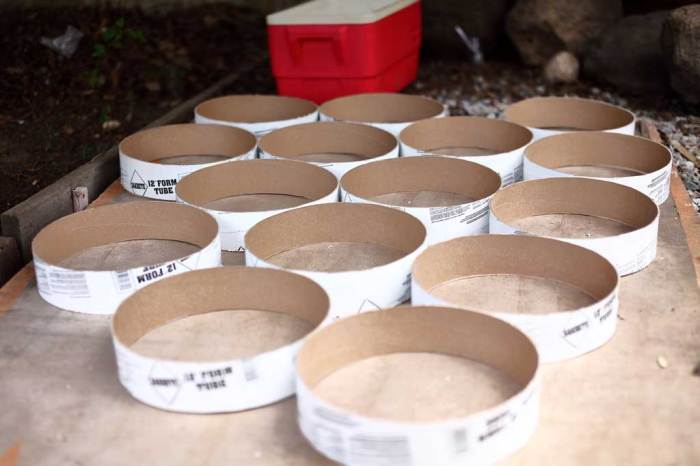DIY stepping stone molds open a world of creative possibilities for transforming your outdoor space. Whether you’re adding a touch of whimsy to your garden or creating a durable pathway, stepping stones offer a personalized and budget-friendly solution. This guide explores the various materials, techniques, and design ideas involved in crafting your own stepping stones, empowering you to create unique and lasting additions to your landscape.
From selecting the right mold material to mastering the art of concrete mixing, we’ll cover every step of the process, ensuring you have the knowledge and confidence to embark on your own stepping stone journey. We’ll also delve into design inspiration, providing tips for incorporating colors, textures, and patterns to create stepping stones that reflect your personal style and complement your garden’s aesthetic.
Preparing the Concrete: Diy Stepping Stone Molds

The heart of your stepping stones is the concrete mix. It’s a simple blend of cement, aggregates (like sand and gravel), and water. But the right proportions and mixing technique are key to creating durable, long-lasting stones.
Mixing Concrete
The ideal concrete mix for stepping stones is a balance of strength and workability. A strong mix resists cracking and crumbling, while a workable mix is easy to pour and shape.
- Measure your ingredients carefully. Using a bucket or measuring cup, follow the recommended ratio of cement, aggregates, and water. A common ratio is 1 part cement, 2 parts sand, and 3 parts gravel. You can adjust the water amount depending on the desired consistency.
- Mix dry ingredients first. Combine the cement, sand, and gravel in a wheelbarrow or mixing tub. This ensures that the dry ingredients are evenly distributed before adding water.
- Gradually add water. Slowly pour water into the dry mix while stirring with a shovel or a trowel. The goal is to create a consistency similar to thick pancake batter. It should be moist enough to hold its shape when you lift a small amount with the shovel, but not so wet that it drips.
- Mix thoroughly. Continue stirring the mixture until it is completely combined and uniform. This ensures that the cement is fully hydrated and the aggregates are evenly distributed.
Avoiding Common Mixing Errors, Diy stepping stone molds
A few common mistakes can affect the quality of your concrete mix.
- Adding too much water. This can lead to a weak and brittle concrete that is prone to cracking. A good rule of thumb is to start with a slightly dry mix and add water gradually until you reach the desired consistency.
- Not mixing thoroughly. If the ingredients are not properly combined, the concrete may not be uniform and can lead to weak spots or uneven curing. Make sure to mix the concrete until it is completely blended and there are no dry clumps.
- Using dirty tools. Dirt and debris in your mixing tools can contaminate the concrete mix, leading to imperfections in the final product. Clean your tools thoroughly before mixing.
With a little creativity and a touch of DIY spirit, you can create stepping stones that are both beautiful and functional. Whether you’re a seasoned gardener or a novice DIY enthusiast, this guide provides a comprehensive roadmap to crafting your own unique stepping stones. So, gather your materials, unleash your imagination, and embark on a rewarding project that will transform your outdoor space into a personal oasis.
DIY stepping stone molds offer a fun way to personalize your garden. You can add unique textures and patterns to your creations by incorporating pressed flowers, which you can learn how to make with this guide on DIY pressed flowers. The dried petals and leaves create beautiful accents that will last for years in your stepping stones, adding a touch of nature and whimsy to your outdoor space.
